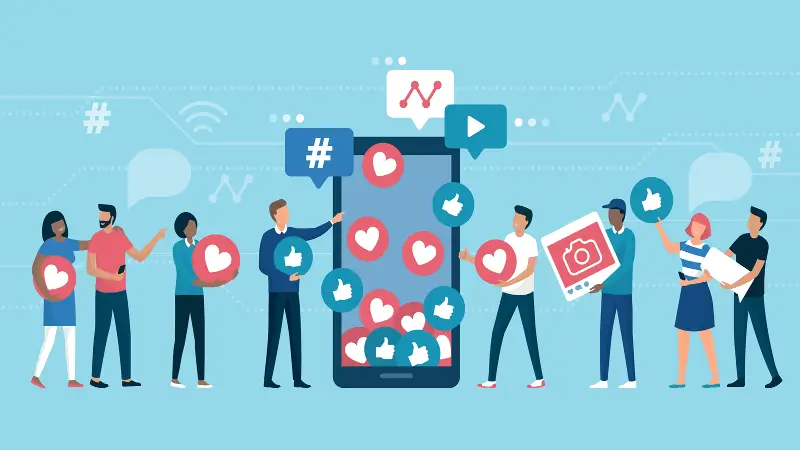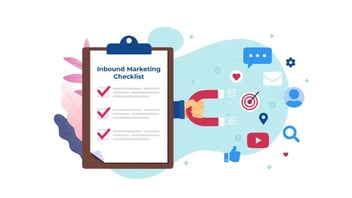Marketing für verschiedene Generationen
Die Unterschiede zwischen den Generationen sorgen für interessante Hürden bei Marketingstrategien und -taktiken. Diese Tatsache wird immer deutlicher, je älter die Generation Z wird und sich der Konsumentenschicht anschließt. Mit der zunehmenden Kaufkraft dieser Kohorte werden die Unterschiede zur Generation Y (Millennials) noch deutlicher, die bisher übersehen wurden. Die Tatsache, dass selbst die Öffentlichkeit hin- und hergerissen ist, ob diese beiden Generationen unterschiedlich sind oder nicht, bildet die Grundlage für den heutigen Artikel.
Ein Forscher stellte fest, dass die Meinungen zu diesem Thema fast gleichmäßig verteilt sind. Auf die Frage, ob Marketingtaktiken bei beiden Altersgruppen gleich gut funktionieren würden, antworteten 56 % der Befragten mit Ja und 44 % mit Nein. In der Forschung ist das so gut wie eine 50/50-Aufteilung. Und wenn die Öffentlichkeit den Unterschied nicht erkennen kann, was soll ein Vermarkter dann tun?
Als Teil Ihrer Marktsegmentierung in einem kundenorientierten Marketingansatz ist die "Generation" ein ebenso wichtiger Faktor für die Kaufentscheidung eines Käufers wie Geografie, Einkommen und viele andere Attribute, die die Buyer Persona ausmachen. Sie haben diese für Ihre Marketingkampagnen definiert, richtig? Ohne eine definierte Buyer Persona oder demografische Zielkunden können Sie Ihre Botschaften nicht personalisieren.
Generationsbezogene Definitionen
Bevor wir uns damit befassen, sollten wir sicherstellen, dass alle Beteiligten wissen, wer zu den einzelnen Generationen gehört. Und da wir uns mit Forschung und Marketing beschäftigen, werden wir uns an die Definition des Pew Research Center für die Altersgruppen der einzelnen Generationen halten:
-
Silent - 74-91
-
Baby-Boomer - 55-73
-
Generation X - 39-54
-
Generation Y (Millennials) - 23-38
-
Generation Z - 22 Jahre und jünger (für die Generation Z gibt es ab 2019 keine untere Altersgrenze)
Wir werden uns heute auf die Generationen Y und Z konzentrieren, da sie das größte Segment der Käuferschaft darstellen und die ersten Digital Natives sind. Sie werden ähnliche Unterschiede zwischen fast allen zwei Generationen finden, die Sie betrachten, wobei die Öffentlichkeit sie oft als vergleichbar ansieht, obwohl es in Wirklichkeit große Unterschiede gibt.
Bei unseren beiden Jahrgängen sind die Ähnlichkeiten, die von den anderen Generationen am häufigsten wahrgenommen werden, vor allem auf das öffentliche Erscheinungsbild zurückzuführen. Die scheinbar ständige Nutzung sozialer Medien, niedrigere Heiratsraten und "frivole" Ausgabengewohnheiten sind nur einige der Dinge, die in den oben zitierten Untersuchungen als typisch für Millennials und Gen-Zers bezeichnet werden.
Auch wenn sie auf den ersten Blick identisch erscheinen mögen, so werden doch grundlegende Unterschiede deutlich, wenn es darum geht, diese Verbraucher zu vermarkten, so dass es sich lohnt, diese Unterschiede zu berücksichtigen. Wir sehen drei Hauptbereiche, in denen sich diese Einstellungen und Unterschiede am deutlichsten zeigen: Technologie, Geld und Moral.
Technologie hat für beide Demografien eine wichtige Rolle gespielt, nur auf unterschiedliche Art und Weise
Die Millennials waren die erste der so genannten "digital native"-Generationen, die nie eine Zeit ohne Internet und allgegenwärtige Mobiltelefone erlebt hat. Was jedoch oft übersehen wird, ist der Unterschied zwischen dem Aufwachsen mit einer Einwahl-Internetverbindung zu Hause und der allgegenwärtigen 3-4-5G-Verbindung, die die Generation Z vom ersten Tag an in ihrer Tasche hat.
Und doch wird die Generation Z auch als die einsamste Generation" bezeichnet, trotz dieser ständigen digitalen Verbindung. All dies bedeutet, dass die technologische Versiertheit dieser Kohorten sehr unterschiedlich ist, vielleicht sogar noch drastischer als bei den Generationen vor ihnen, da die Generation X und die Boomer ihre angeborene Widerstandsfähigkeit nutzten, um sich an die neue Technologie anzupassen und zu lernen, wie sie diese zur Erreichung ihrer Ziele einsetzen können.
Was die Unterschiede im Marketing betrifft, so gibt es einige Dinge zu beachten. Obwohl beide Gruppen soziale Medien intensiv nutzen, verwenden sie nicht dieselben Plattformen und auch nicht auf dieselbe Weise. Millennials konzentrieren sich mehr auf lange Inhalte, wie sie auf Facebook, YouTube und LinkedIn zu finden sind. Die Generation Z hingegen mag kürzere, videobasierte Inhalte, wie sie auf Snapchat, Instagram (Stories) und zunehmend auch auf TikTok zu finden sind. Dieser Unterschied in der Länge der Inhalte ist hauptsächlich auf die von Psychologen festgestellte unterschiedliche Aufmerksamkeitsspanne zurückzuführen. Millennials verlieren nach ~12 Sekunden das Interesse, während es bei der Generation Z nur 8 Sekunden dauert, bis sie wegklicken.
"Es ist die Wirtschaft, Dummkopf". Bedeutet jetzt mehr denn je
Der Dot-Com-Crash Ende der 90er und Anfang der 00er Jahre definierte die finanzielle Realität für die Generation X und die frühen Millennials. In der Zwischenzeit hat die Rezession, die durch das Immobilienfiasko von 2008 ausgelöst wurde, das Gleiche für die späten Millennials und die Generation Z bewirkt. Der Eintritt ins Erwachsenenalter mitten in der Rezession bedeutet, dass die Gen-X eher schüchtern mit ihren Ausgabengewohnheiten sind, trotz des Anscheins und der Witze über Avocado-Toast. Die Zahlen zeigen, dass diese Menschen eher sparen als ausgeben, und wenn sie etwas ausgeben, ziehen sie Erlebnisse materiellen Gütern vor.
Die Generation Z hingegen ist kurz nach dem letzten Abschwung erwachsen geworden und ist eher bereit, in Erlebnisse und Anschaffungen zu investieren, die ihrer Meinung nach ihren Lebensstil bereichern. Diese Bereitschaft, Geld auszugeben, ist ein krasser Unterschied zwischen den Generationen, der in der Öffentlichkeit oft missverstanden wird und zu viel Herablassung und Witzen führt.
Verstehen Sie langsam, warum es nicht mehr so gut funktioniert, alle unter 40-Jährigen in eine Schublade zu stecken?
Moral, Werte und Bedeutung bedeuten mehr denn je
Aus der obigen Finanzdiskussion geht auch hervor, dass es ein weit verbreiteter Irrtum ist, dass diese beiden Jahrgänge materialistischer und weniger moralisch sind als frühere Generationen. Die Fakten belegen dies einfach nicht. Millennials und Gen-Z geben weniger aus und haben stärkere Werte als jede andere untersuchte Generation zuvor. Die Generation Z ist auch die erste Generation, die ihre Werte über das stellt, was ihnen gesagt wurde, d. h. wenn die Werte eines Unternehmens und die Markenpersönlichkeit nicht übereinstimmen, werden sie ihr Geld woanders hinbringen.
In ähnlicher Weise legt die Generation Z großen Wert auf persönliche Kontakte. Sie ziehen es vor, ein neues Produkt von einem Freund oder zumindest von einem lebenden Menschen kennen zu lernen, anstatt Marketing-Floskeln zu lesen oder eine fade, generische Werbung zu sehen. Für die Marketingstrategie bedeutet dies, dass Sie Ihren Kampagnen ein menschliches Gesicht und eine menschliche Stimme verleihen, um den größten ROI zu erzielen. Ganz zu schweigen davon, dass Sie den Vorlieben dieser Generation eine Stimme geben, um zu zeigen, dass Sie ihnen Aufmerksamkeit schenken und ihren Input und ihre Werte schätzen.
Abschließende Fakten, Zahlen und Vorschläge für generationsübergreifendes Marketing
- Bis 2030 werden 75 % der Arbeitskräfte Millennials sein.
- Erwachsene der Generation Z sind bei der Auswahl eines Arbeitsplatzes stärker finanziell motiviert: 65 % geben an, dass sie eher auf das Gehalt als auf Sozialleistungen und Vergünstigungen achten.
Es mag leicht sein, die Generation Z zu übersehen, da viele von ihnen noch keine Kaufkraft haben. Ich glaube nicht, dass sie bei Ihren auf Millennials ausgerichteten Kampagnen auf Resonanz stoßen werden, da sie sich in einigen Schlüsselbereichen, wie den oben genannten, unterscheiden.
Es gibt jedoch einige Gemeinsamkeiten. Wenn Sie also eine integrierte Kampagne durchführen müssen, lohnt es sich, die Altersgruppe der 18- bis 34-Jährigen anzusprechen. Beide Gruppen lieben, wie bereits erwähnt, die sozialen Medien. Wenn Sie diese Zielgruppe anvisieren, sollten Sie sich auf YouTube, Instagram und Facebook konzentrieren, um die meisten der beiden Demografien zu erreichen. Trotz der Unterschiede bei den Vorlieben für Inhalte und der Aufmerksamkeitsspanne sind beide Gruppen auf sofortige Befriedigung aus, so dass diese drei Medien alle Faktoren am besten vereinen.
Die Verwendung von kurzen Ausschnitten gemischt mit detaillierteren Inhalten, die das Wie und Warum Ihres Produkts erläutern, spricht diese Zielgruppe an. Heben Sie hervor, wie Ihr Produkt Probleme löst, die beiden Generationen gemeinsam sind, indem Sie sich auf die technologischen, finanziellen oder moralischen Auswirkungen konzentrieren.
Und schließlich sollten Sie daran denken, dass Sie Ihre Markenbotschaft zwar mit einer einzigen Kampagne an beide Gruppen gleichzeitig verbreiten, dass aber bei der Interaktion und dem Kontakt mit den Menschen Unterschiede zutage treten werden. Dieser persönliche Kontakt und generationsspezifische Inhalte werden Ihnen und Ihrem Produkt einen begehrten Platz in den Herzen und Köpfen der Millennials und der Generation Z verschaffen.
Dieser Beitrag ist auch verfügbar in:
- Englisch: Marketing to Different Generations
- Spanisch: Marketing para diferentes generaciones
- Französisch: Marketing auprès des différentes générations
- Italienisch: Marketing per le diverse generazioni
- Rumänisch: Marketing pentru generații diferite
- Chinesisch: 面向不同世代的营销









Hinterlasse einen Kommentar